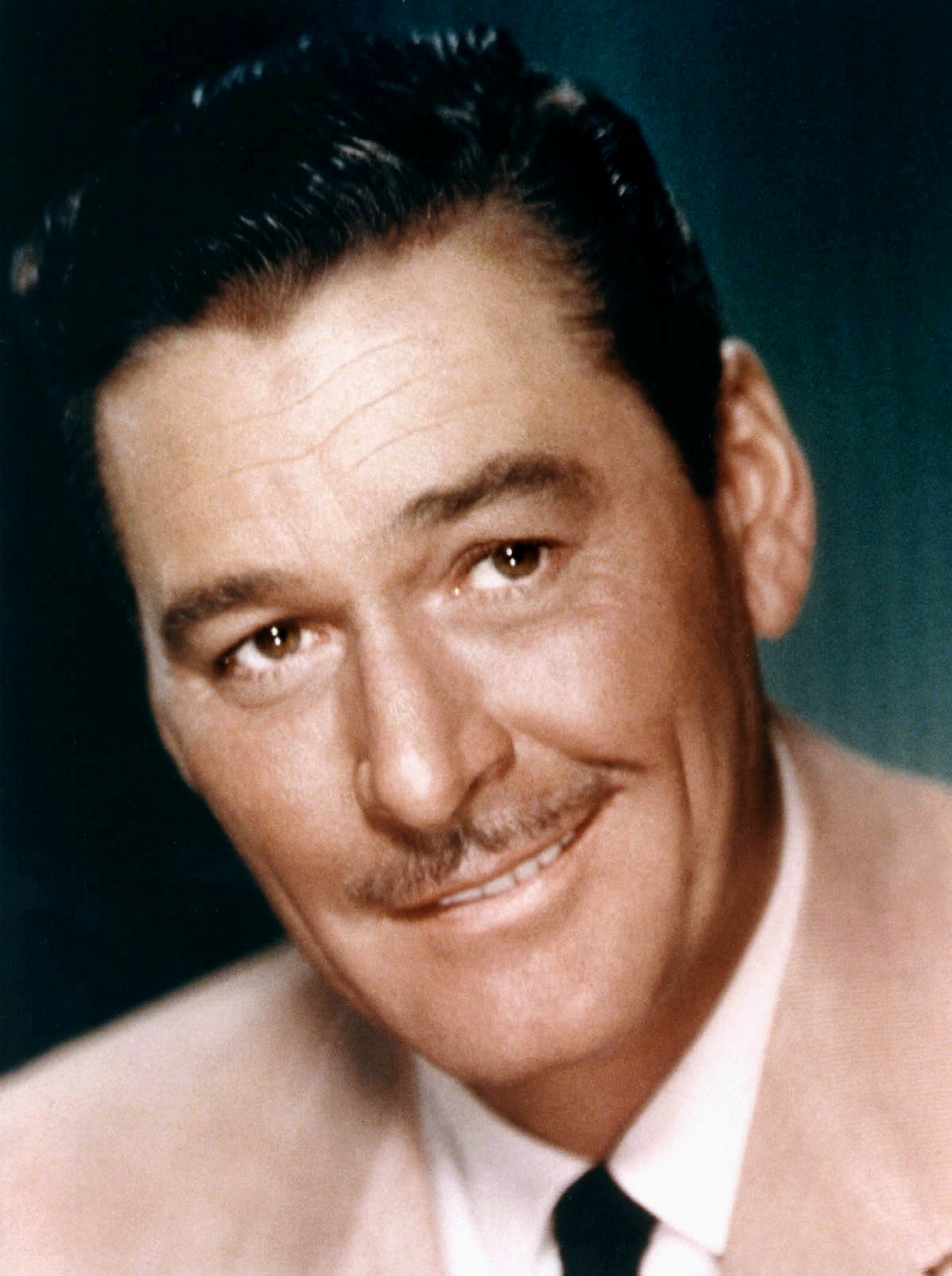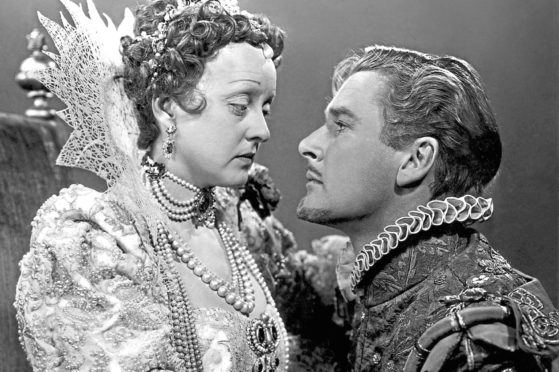
Errol Flynn’s previous movie with Bette Davis had provided a timely boost for both of them – in 1939, though, it was a downright slap in the face.
Davis is said to have slapped him much harder than she needed to during the filming of The Private Lives Of Elizabeth And Essex, their 1939 outing.
It’s thought they fell out more than once during its making, with Flynn adding fuel to the fire by saying she was annoyed because of unrequited romantic interest.
To others, Bette disliked being a mere equal billing with someone she reckoned could only do dashing adventurers and little serious acting.
She would admit, years later, that he could really act, though Flynn himself was always happy to state, perhaps tongue-in-cheek, that he wasn’t a real actor.
Bette had studied hard to be a convincing Elizabeth I and wanted Laurence Olivier opposite her. The studio, however, feared he was unknown to American audiences and knew Flynn was at the top of his game.
She, on the other hand, disliked his relaxed attitude to work and the critics tended to agree that she was great, he was less so – the ordinary public, however, loved him, regardless of his Tasmanian accent. The film did well, despite all this bickering.
Dodge City, that same year of 1939, couldn’t have been farther removed from the subject of English royalty and it had actually worried him more.
How would audiences take to Errol Flynn in a Western?
In the end, it gave Warner Bros their most popular movie of the year and he would go on to make several more Westerns. The man was a natural.
Virginia City was its 1940 follow-up, also exceedingly popular, as was Santa Fe Trail, with Olivia de Havilland and Ronald Reagan.
Also featuring Humphrey Bogart, complete with moustache, Virginia City was the story of a Union officer escaping from Confederate prison and being sent to the city, where millions of dollars are coming to support the Confederacy.
Randolph Scott plays the prison boss who is sending the massive amount of money, so there is no love lost between the pair. Bogart is John Murrell, legendary gang leader working as a travelling salesman.
When Santa Fe Trail came out and was also a huge hit, Flynn must have asked himself why he’d ever worried about being a convincing Western star.
Regardless of what any hack in New York or Hollywood thought, the public loved him in these movies and he could have gone on making Westerns forever.
This one saw him as a Confederate, with Ronald Reagan as Custer and Raymond Massey as John Brown, the anti-slavery abolitionist.
As it came out as the United States was entering the Second World War, they had to balance it just right as they needed to stress the importance of the whole country pulling together.
Keeping Americans in the southern and northern states interested was also tricky with such subject matter at the heart of it.
Again, it was an effortless hit.
They say that at this time Errol Flynn was the fourth-biggest US star and ranked similarly internationally, too. For many, he was No 1.
Still, he was up against James Cagney, Bogart and that woman Bette Davis, so the competition was tough.
His last film with Michael Curtiz, his director on so many hits, was the 1941 movie Dive Bomber.
The great Fred MacMurray gave excellent support, while the Technicolor footage of US naval aircraft and ships was a sensation in the United States.
With Curtiz now history, Flynn got down to work on a run of films with Raoul Walsh, the first being 1942’s They Died With Their Boots On, a biopic of George Armstrong Custer.
With Olivia de Havilland back alongside him for the last of the dozen movies they did together, it became a massive hit, one of the biggest of that year.
August that year saw another monumental event for Flynn as he became a naturalised American citizen. He then tried to enlist in the armed services but failed the physical because of malaria, which he had contracted in New Guinea and which would come back and disrupt his work from time to time.
He also had a heart murmur and latent pulmonary tuberculosis, so to be mocked as a draft dodger by some must have been extremely hard to take.
Apparently, it wasn’t helped by the fact that the studio refused to reveal his health issues – they didn’t want anyone to know their swashbuckling adventurer might be weaker than we all assumed.
The 1943 film Edge Of Darkness saw Flynn play a Norwegian resistance fighter and that year he also signed a new deal with Warners for four movies a year, one of which he would be allowed to also produce.
It was during the war years that he also went through some of his most dreadful times when two teenage girls separately accused him of statutory rape.
The scandal wouldn’t go away, though many fans supported him and even started organisations such as the American Boys’ Club for the Defense of Errol Flynn (ABCDEF) to stick up for him.
Flynn was acquitted but, of course, his image would be forever damaged and he lost some of his shine after the scandal.
Never Say Goodbye, a return to comedy after the war, was not a hit though it brought in a reasonable sum of money. Cry Wold, a thriller in 1947, was another moderate success.
Silver River, in 1948, was his first proper hit in a while, featuring Ann Sheridan alongside him, but there were many tales of Flynn’s heavy drinking on set.
If you waited until the afternoon, it was said, he would be too wasted to do any decent work and Raoul Walsh tore up their contract in disgust at this time.
Perhaps, felt Warners, a return to swashbucklers would do the trick. Sure enough, The Adventures Of Don Juan, from 1948, did very well in Europe, if less so in the US.
It was at this point, his career in apparent slow decline, that the studio bosses made the decision to reduce the budgets for Errol Flynn films, something that obviously wouldn’t help.
Flynn would still prove himself capable from time to time and That Forsyte Woman was a 1949 hit, as was Montana in 1950 and Rocky Mountain the same year. Kim was one of his most popular films of those times.
In 1952 Flynn became seriously ill. His hepatitis had resulted in liver damage and, after the 1953 film The Master Of Ballantrae, his long contract with Warners was at an end.
Relocating to Europe the next year, he made Crossed Swords, another swashbuckler, in Italy. Inspired to follow up with something similar, he made a decision that would ultimately ruin his bank balance and his life. The Story Of William Tell fell apart during production, with everything that could go wrong going wrong, and it ruined him financially. Desperate for money and work, he took on jobs that weren’t suitable and that flopped.
The US, however, hadn’t forgotten Errol Flynn and Hollywood came back to offer him jobs in America. He would play drunks in a few movies which did well.
Not that it was a shock, as in real life he had long had a reputation for hard drinking, chain smoking and womanising, not to mention narcotics abuse in the 40s.
It was during a 1959 flight to Canada, to lease his yacht and make some much-needed money, that he became seriously unwell.
Later, he went to his bedroom to rest but was found unresponsive when they checked on him later. He was aged just 50 when he died.
He would never know what happened to his son, Sean, a war correspondent who disappeared in Cambodia during the Vietnam War, assumed killed by the Khmer Rouge. His daughter, Rory, would become a fashion model and photographer. Flynn had been married three times, to Lili Damita, Nora Eddington and Patrice Wymore.
He also had two other daughters, Deirdre and Arnella, and he is buried at the Forest Lawn Memorial Park in California.


Enjoy the convenience of having The Sunday Post delivered as a digital ePaper straight to your smartphone, tablet or computer.
Subscribe for only £5.49 a month and enjoy all the benefits of the printed paper as a digital replica.
Subscribe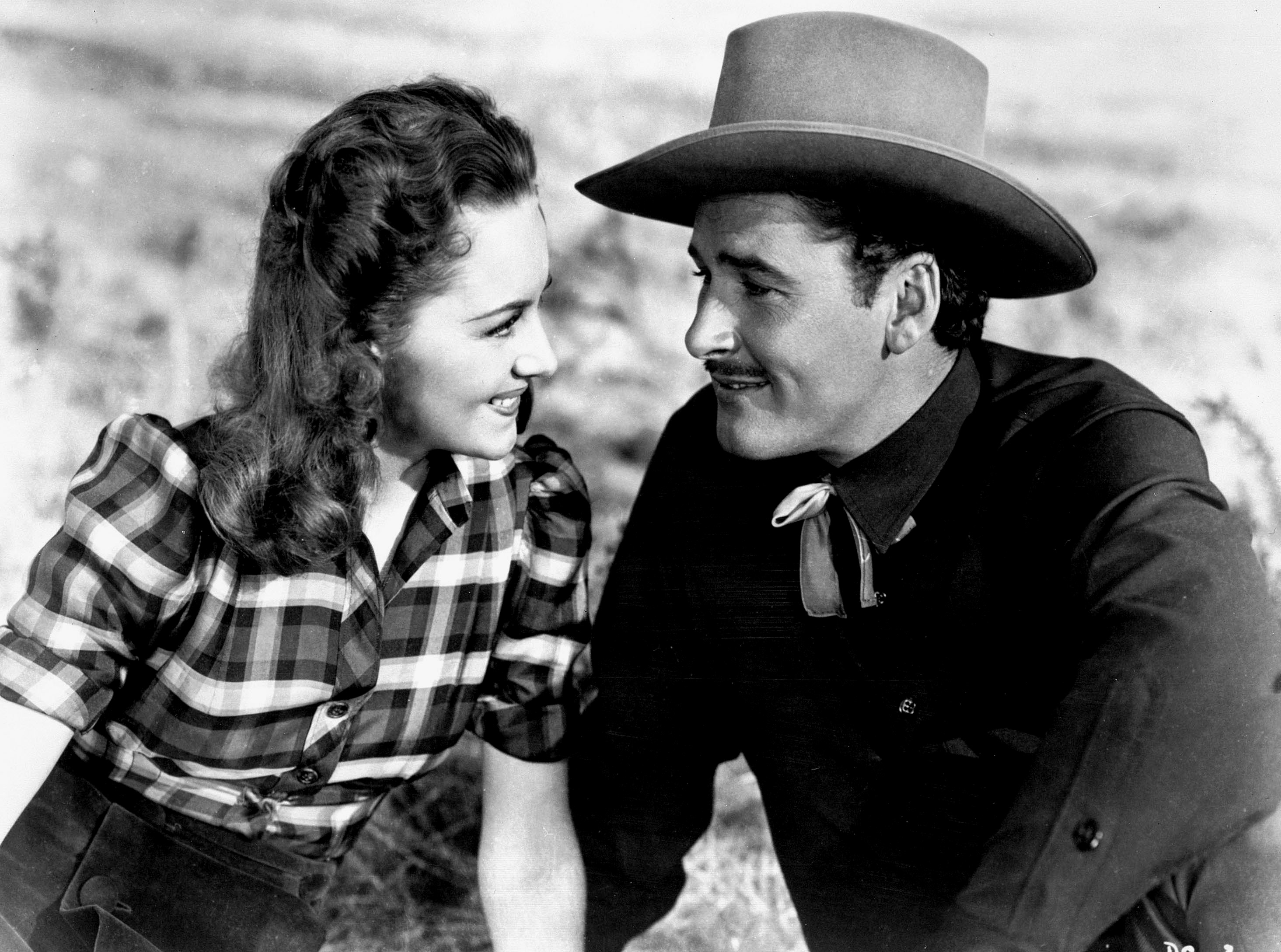 © Allstar / Warner Bros
© Allstar / Warner Bros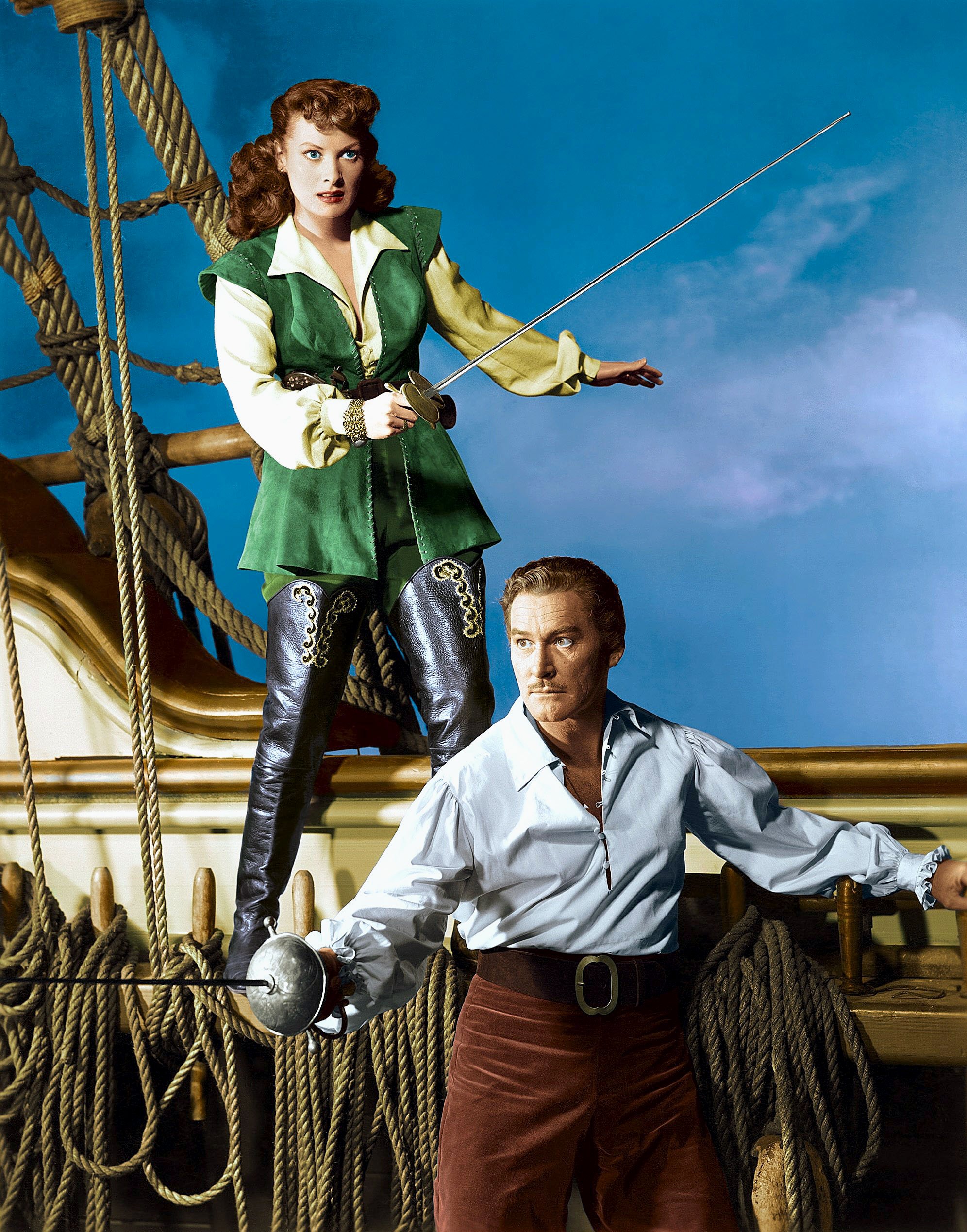 © Allstar/UNIVERSAL
© Allstar/UNIVERSAL 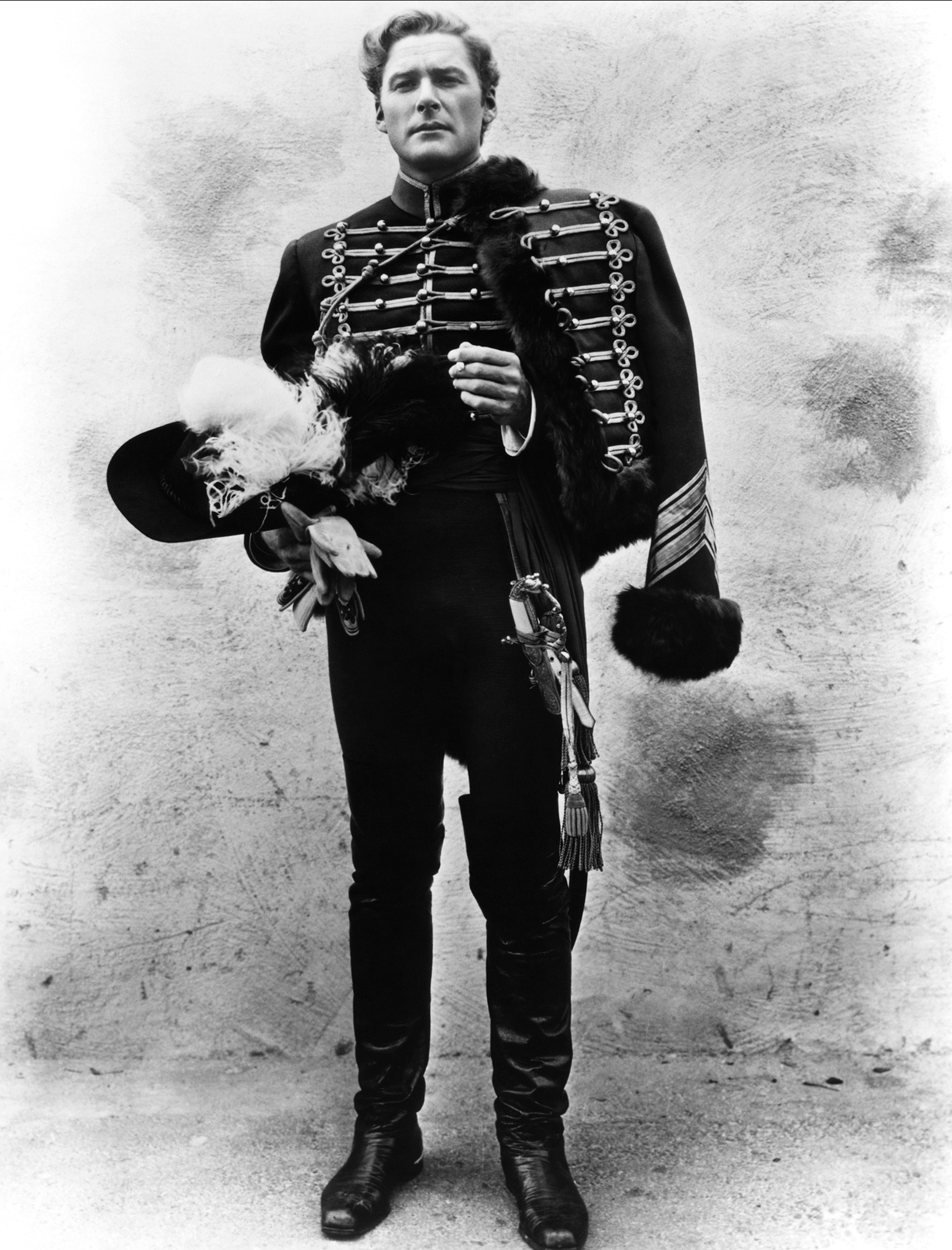 © Allstar / Warner Bros.
© Allstar / Warner Bros.